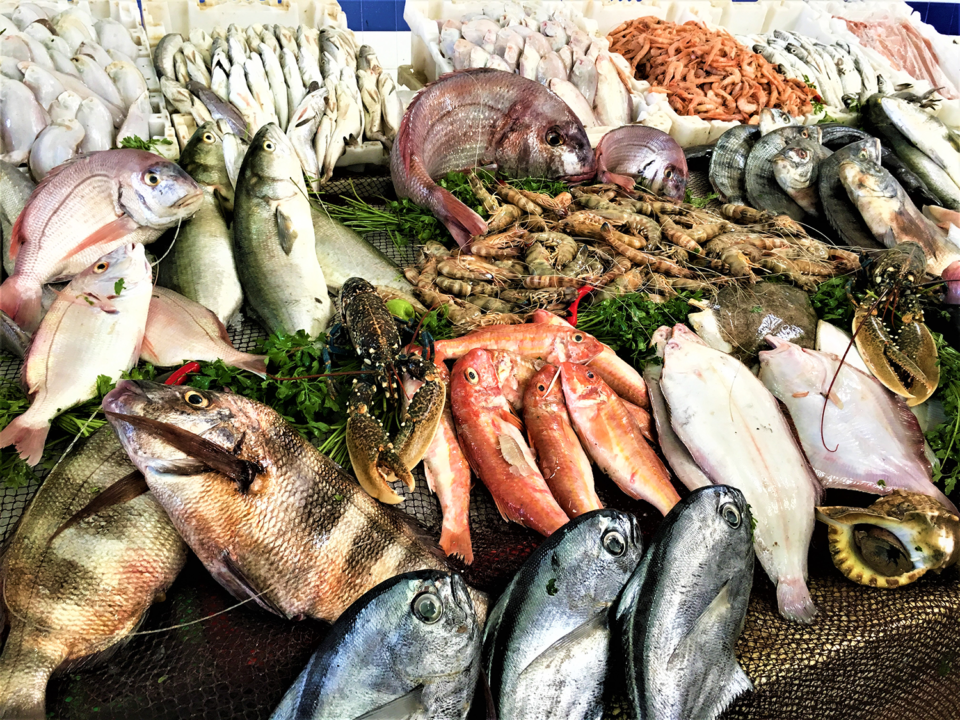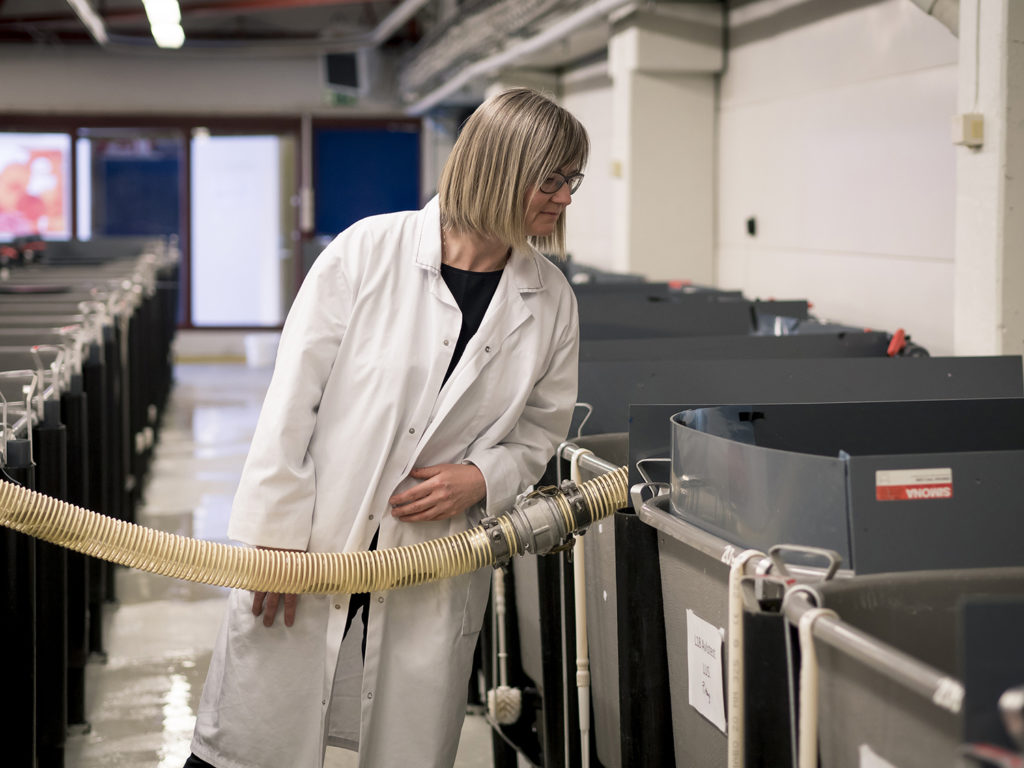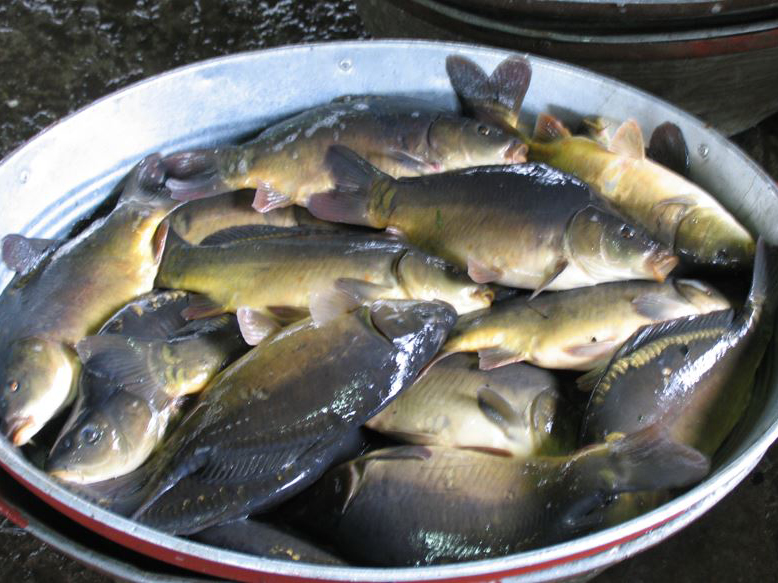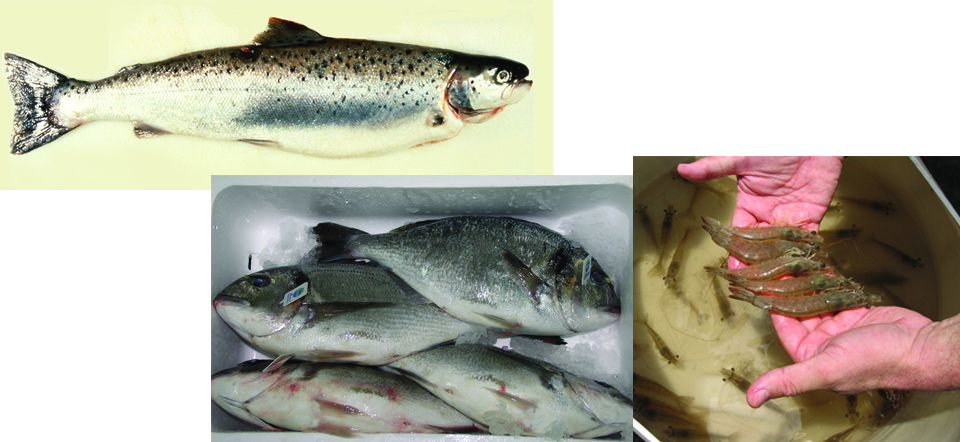aTBP method shown suitable for species verification, parental recognition and other applications

There are around 35,000 described species of fishes, accounting for about 50 percent of all vertebrates. Fishes have great diversity, reflecting processes of adaptation to very different aquatic environments. High species number, significant morphological and genetic diversity, and environmental fitness are at the basis of several important scientific issues. These may refer to taxonomy and correct species identification, evolutionary biology and assessment of variation and changes in allele frequencies, resilience and adaptability to extremely variable climate conditions, diversification and parental recognition and seafood traceability.
Deoxyribonucleic Acid (DNA) the molecule that carries genetic instructions in all living things. DNA barcoding is a method of species identification using a short section of DNA from a specific gene or genes. The principle of DNA barcoding is that, by comparing these short DNA sections or sequences with a reference library of an individual sequence, it can uniquely identify an organism to species, analogous to how a supermarket scanner uses the familiar black stripes of the UPC barcode to identify an item in its stock against its reference database.
The fish section of the Consortium for Barcoding of Life includes about 8,000 fish species and is an effective and comprehensive resource for the analysis of fishes and fish products. More recently, and for the purpose of tracing species in food matrixes that contain a low quality DNA due to harsh food processing, the use of minibarcodes (shorter fragments of the full length DNA barcode) has been applied with some success.
Animal tubulin-based polymorphism (aTBP) is a new, molecular marker-based tool [a marker is a molecule contained in a sample taken from an organism that can be used to reveal certain characteristics about the source] based on the presence of certain DNA polymorphisms [the different DNA sequences among individuals, groups, or populations] of a gene family called β-tubulin.
This gene family is ubiquitous and can be used to determine specific genetic information. The aTBP technology offers a practical and simpler alternative for the genetic identification of fish species, as well as subpopulations and local varieties.
This article – adapted and summarized from the original publication – evaluated the use of the aTBP method for the genetic characterization of fishes at different taxonomic levels and its possible applications.
Study setup
We prepared DNA extracts from the following fish species: gilthead sea bream (Sparus aurata), European sea bass (Dicentrarchus labrax), rainbow trout (Oncorhynchus mykiss), Adriatic sturgeon (Acipenser naccarii), Atlantic bluefin tuna (Thunnus thynnus), carpione (Salmo carpio) and river trout (Salmo trutta f. fario). Fish samples were provided by the Spallanzani Institute (Rivolta d’Adda, Italy) from various fishing and aquaculture research projects it has been involved with.
The DNA extracts were originally produced from fin-clipped samples, and then fish species identification of these samples were carried out using commercial systems. For each species, 15 to 20 samples were randomly chosen and used for the aTBP molecular analyses. Other DNA samples were additionally provided by the Life Sciences Department of the University of Siena (Italy), and included 34 fish specimens purchased frozen from local Tuscan markets, including gilthead sea bream, European sea bass, rainbow trout, white sturgeon (Acipenser transmontanus), yellowfin tuna (Thunnus albacares), pangasius (Pangasius hypophthalmus) and Atlantic salmon (Salmo salar).
All the DNA samples were then used as template for aTBP PCR amplification, a broadly used method to quickly make millions to billions of copies of a specific DNA sample for its study, and then evaluated using a commercial genetic analyzer.
For detailed information on the collection of experimental samples; aTBP amplification and capillary electrophoresis; and data analyses, refer to the original publication.
Results and discussion
The results of our study support the use of the aTBP method for the genetic characterization of fish at different taxonomic levels and for different purposes. Our data demonstrate that this method can amplify from the genome (the complete set of DNA from an organism) of any fish sample a number of fragments that delineate a specific DNA profile or barcode. The aTBP amplification products of a single barcode can then be sequentially attributed to the family, genus, species and subspecies categories. Basically, the aTBP method improves the two fundamental features of an ideal DNA barcode: high taxonomic coverage and high interspecific resolution.
The use of aTBP for identification, authentication and detection of fish species in food samples is quite appropriate and particularly suitable for all those laboratories that are not equipped with specialized equipment. As a classical DNA barcoding, aTBP can be applied to a large number of species, characterized by a large spectrum of variation. Differently from a classical DNA barcoding, the aTBP primers are effective independently from the taxonomic rank, while other primers must often be optimized for their successful use at ranks higher than species. In addition, aTBP can be used for detecting subspecies populations and local varieties.
Both applications – aTBP and classical DNA barcoding – are particularly suitable for seafood traceability, especially when transformation processes make morphological inspection impossible for fillets, frozen and canned foods, which can promote product substitution and deception. These irregularities could be easily uncovered by the detection of the aTBP species-specific diagnostic peaks as well as the visualization of very diverse patterns of amplification, as illustrated in Fig. 1.
![Fig. 1: Comparison between seabass and pangasius aTBP. A) electropherograms [plots of DNA fragment sizes, typically used for genotyping such as DNA sequencing] obtained from pangasius (top panel) and European sea bass (bottom panel). Reported numbers on top of the peaks refer to the sizes of the amplified fragments. B) Separation in agarose gel of the aTBP fragments amplified from pangasius or sea bass samples. The numbers and letters above the agarose gel indicate the samples analyzed.](https://www.globalseafood.org/wp-content/uploads/2020/09/GIANI-aTBP-Fig-1.png)
Perspectives
aTBP is a simple and quick technique for the genetic characterization of fish samples at different taxonomic levels and for different purposes. It allows for several fish samples to be concurrently analyzed, providing consistent and reproducible genomic profiles that help in the characterization of the genetic variation of the investigated fish species. There are ongoing efforts to establish a practical aTBP data base with the help of various institutions and seafood companies.
Genomic DNA data are also very important for conservation management of genetic resources and for the assessment of variations occurring in natural populations. These data provide a novel opportunity to investigate how populations have responded to changes, to identify mechanisms underlying these changes, and to evaluate the adaptive potential and vulnerability of populations in the future.
Now that you've reached the end of the article ...
… please consider supporting GSA’s mission to advance responsible seafood practices through education, advocacy and third-party assurances. The Advocate aims to document the evolution of responsible seafood practices and share the expansive knowledge of our vast network of contributors.
By becoming a Global Seafood Alliance member, you’re ensuring that all of the pre-competitive work we do through member benefits, resources and events can continue. Individual membership costs just $50 a year.
Not a GSA member? Join us.
Authors
-
Dr. Silvia Gianì
Department Scienze Bioagroalimentari
Istituto Biologia e Biotecnologia Agraria
National Research Council
Milano, Italy -
Silvia Silletti, Ph.D.
Department Scienze Bioagroalimentari
Istituto Biologia e Biotecnologia Agraria
National Research Council
Milano, Italy -
Dr. Floriana Gavazzi
Department Scienze Bioagroalimentari
Istituto Biologia e Biotecnologia Agraria
National Research Council
Milano, Italy -
Dr. Laura Morello
Department Scienze Bioagroalimentari
Istituto Biologia e Biotecnologia Agraria
National Research Council
Milano, Italy -
Dr. Giacomo Spinsanti
Department of Life Sciences
University of Siena
Siena, Italy -
Dr. Katia Parati
Istituto Sperimentale Italiano Lazzaro Spallanzani
Rivolta d’Adda (CR), Italy -
Dr. Diego Breviario
Corresponding author
Department Scienze Bioagroalimentari
Istituto Biologia e Biotecnologia Agraria
National Research Council
Milano, Italy
Tagged With
Related Posts

Innovation & Investment
AquaGen CEO: Genomics are transforming aquaculture
The CEO of AquaGen knew that the Norwegian research group’s work in genomics was key to the salmon industry’s future. And that was before she even worked there.

Health & Welfare
Emerging disease: Shrimp Hemocyte Iridescent Virus (SHIV)
SHIV is a new Pacific white shrimp virus in the Iridoviridae family. Authors also developed an ISH assay and a nested PCR method for its specific detection.

Health & Welfare
Barcoding, nucleic acid sequencing are powerful resources for aquaculture
DNA barcoding and nucleic acid sequencing technologies are important tools to build and maintain an identification library of aquacultured and other aquatic species that is accessible online for the scientific, commercial and regulatory communities.

Health & Welfare
Aquaculture genomics: Progress in identifying species genetics continues
The continued application of genome research to aquaculture will provide unprecedented accuracy for genetic selection of performance and production traits.



